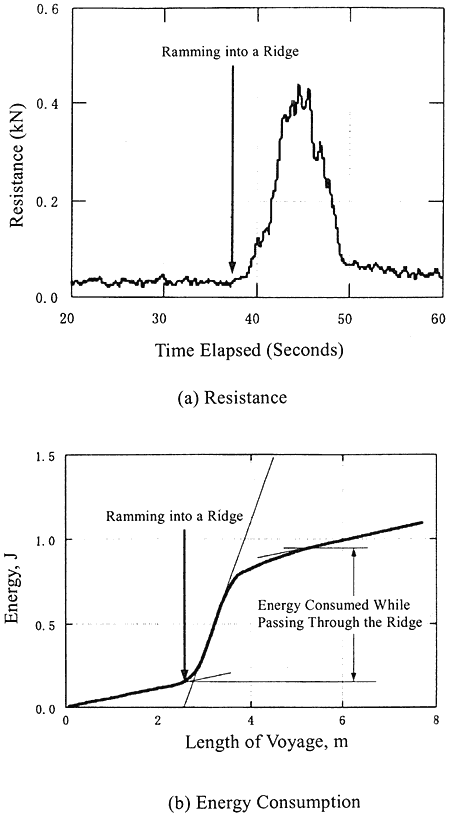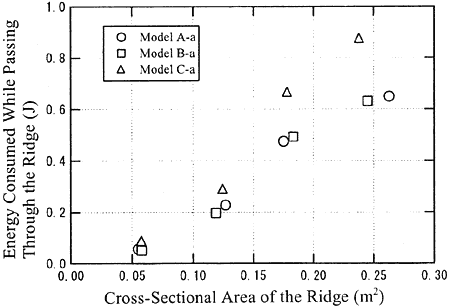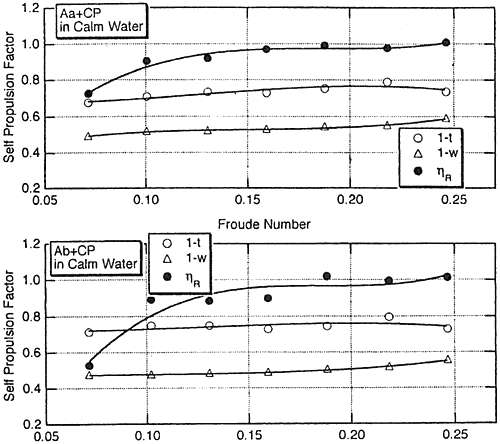The energy was calculated for each test result and expressed as a function of the cross-sectional area of the ridge as seen in Figure B-8. The figure shows that bow C requires more energy to pass over a ridge than the other two bows do. The energy is affected by vertical motion of the model in the ridge, which causes the difference in the energy. The bow is lifted high up due to high incipient resistance in the ridge, while the contact between the ice and the hull is predominant in the vicinity of the bottom of bow. Bow C' concave frame lines and entrance angles of waterlines close to contact area with ice resulted in high resistance when running into a ridge.

Figure B-7 Resistance test through a ridge

Figure B-8 Energy consumed in a ridge
* Test results in open-water
The self-propulsion factors obtained from the self-propulsion tests in open water appear in Figure B-9. To highlight the effect of stern type on self-propulsion performance, combinations of bow A and each stern form were examined Although the thrust deduction coefficient (1-t) shows almost no difference between the sterns, the wake fraction (1-w) is smaller for stern b than for stern a. This is believed to be due to two features of stern b. First, the frame line of stern b features a prominent knuckle that decreases the displacement around the stern, below the water line. Second, the salient U-shaped frame line close to the bottom stimulated the growth of boundary layer around the stern and bilge vortices. Turning test results are indicated in Table B-4.

Figure B-9 Self-propulsion factors in calm water
BACK CONTENTS NEXT